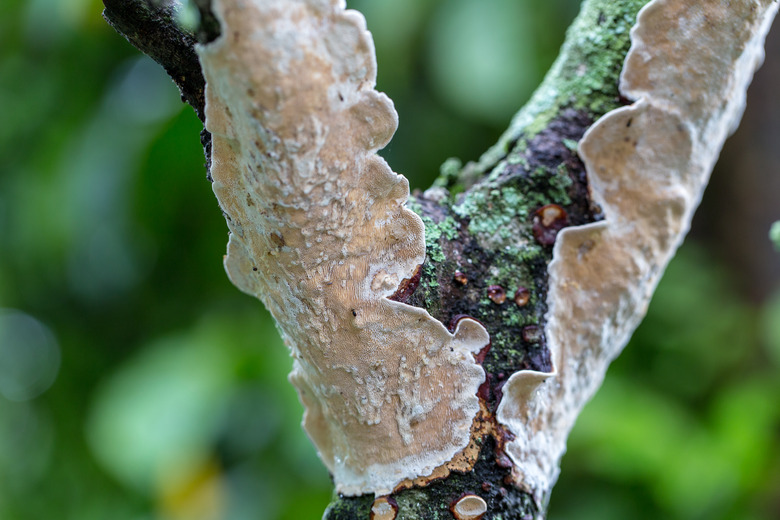Levels Of Cell Organization
With the exception of single-celled organisms and very simple life forms, living things have complex bodies that contain many functional parts. You can organize these parts into different levels of complexity or cellular organization. They range from the smallest, simplest functional units of living things to the largest and most complex.
TL;DR (Too Long; Didn't Read)
Most organisms have functional parts with five levels: cells, tissues, organs, organ systems and whole organisms. Cells hold genetic material and absorb outside energy. Tissues make up the bones, nerves and connective fibers of the body. Organs work to perform specific bodily tasks, such as filtering blood. Organ systems are groups of organs that perform a specific kind of function together, such as digesting food. Together, these smaller systems make up an entire living organism, which is capable of growing, using energy and reproducing.
Level One: Cells
Level One: Cells
Cells are the smallest functional units of all livings things. Both plants and animals contain various kinds of cells. Cells help living things absorb nutrients. In the case of animals, these nutrients come from food. In the case of plants, they come mostly from sunlight, which plant cells convert into usable nutrients via a process called photosynthesis.
Both plant and animal cells carry genetic material in the form of DNA. Without DNA, livings things would not be able to pass on their individual characteristics or the characteristics of their species to the next generation.
Different kinds of cells perform different functions. For example, in animals, red blood cells help to attack viruses, while sperm and egg cells aid in reproduction.
Level Two: Tissues
Level Two: Tissues
Tissues are the organic material from which organs and other bodily structures appear. Cells make up tissues, which share a similar structure and function.
There are four main kinds of tissues found in animal bodies. Epithelial tissues line body cavities and surfaces, such as the inside of the stomach and the outermost layer of the skin. Connective tissue supports, protects and binds certain parts of the body, such as muscles, together. Tendons, ligaments and cartilage are examples of connective tissues. Muscular tissue makes up the muscles of the body. This tissue can contract and expand in specific ways to produce movement. Nervous tissue, such as that found in the central nervous system, can receive stimuli and conduct electrical impulses.
Plants also have tissues. Dermal tissue forms the outer coverings of plants. Vascular tissue moves water and nutrients through the plant. Ground tissue makes up most of plants' bodies and performs the majority of bodily functions, such as photosynthesis.
Level Three: Organs
Level Three: Organs
Organs are structures, comprised of specific kinds of tissue, which perform specialized tasks in the body. For example, in many animals, the stomach breaks down food, and the heart pumps blood. In most animals, organs could not function properly without the brain, which regulates the activity of all organs in the body.
Plants also have organs. Vegetative organs, such as roots and leaves, help to sustain the life of the plant. Reproductive organs, such as cones, flowers and fruits are temporary structures that help to facilitate either sexual or asexual reproduction.
Level Four: Organ Systems
Level Four: Organ Systems
Organ systems are groups of two or more organs which work together to perform a specific function. Humans have 11 systems in their bodies. Among these are the digestive system (comprised of organs such as the stomach, large intestine and colon) which digests food, and the respiratory system (comprised of organs such as the nose, lungs and larynx) that makes breathing possible.
Plants contain just two organ systems. The shoot system includes all of the parts above the ground, such as leaves and stems, while the root system includes all of the parts below the ground, such as roots and tubers.
Level Five: Organisms
Level Five: Organisms
Organisms are whole, complete living things. Organisms can differ dramatically from one another in size and shape. For example, elephants and flowers are both organisms. But all organisms have a few traits in common.
All living things have cells. They can reproduce and are capable of growth. They absorb nutrients, produce waste and are capable of responding to stimuli in their environment. These characteristics are true for both complex and simple living things and for both plants and animals.
Cite This Article
MLA
Cook, Maria. "Levels Of Cell Organization" sciencing.com, https://www.sciencing.com/levels-cell-organization-6515549/. 29 May 2019.
APA
Cook, Maria. (2019, May 29). Levels Of Cell Organization. sciencing.com. Retrieved from https://www.sciencing.com/levels-cell-organization-6515549/
Chicago
Cook, Maria. Levels Of Cell Organization last modified March 24, 2022. https://www.sciencing.com/levels-cell-organization-6515549/
